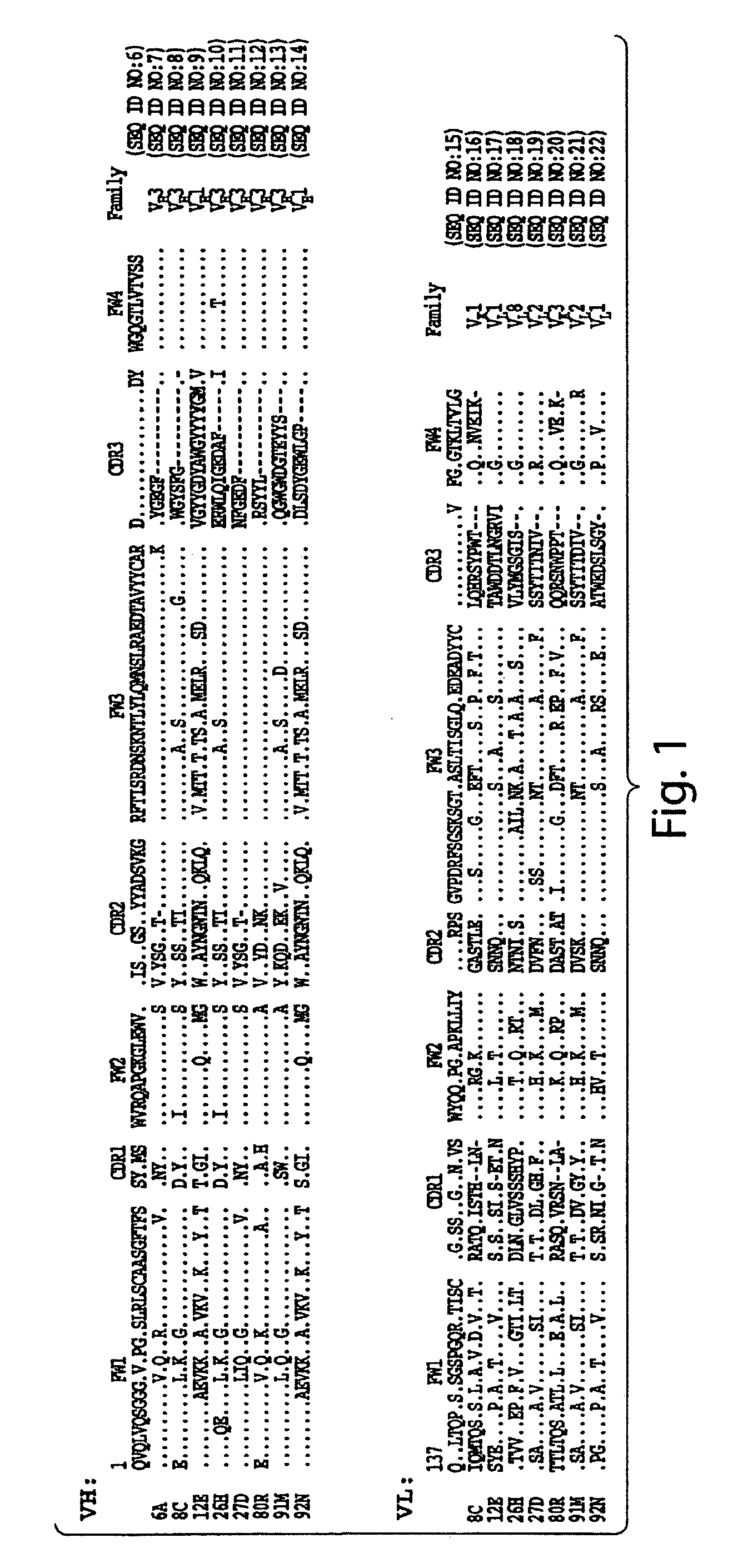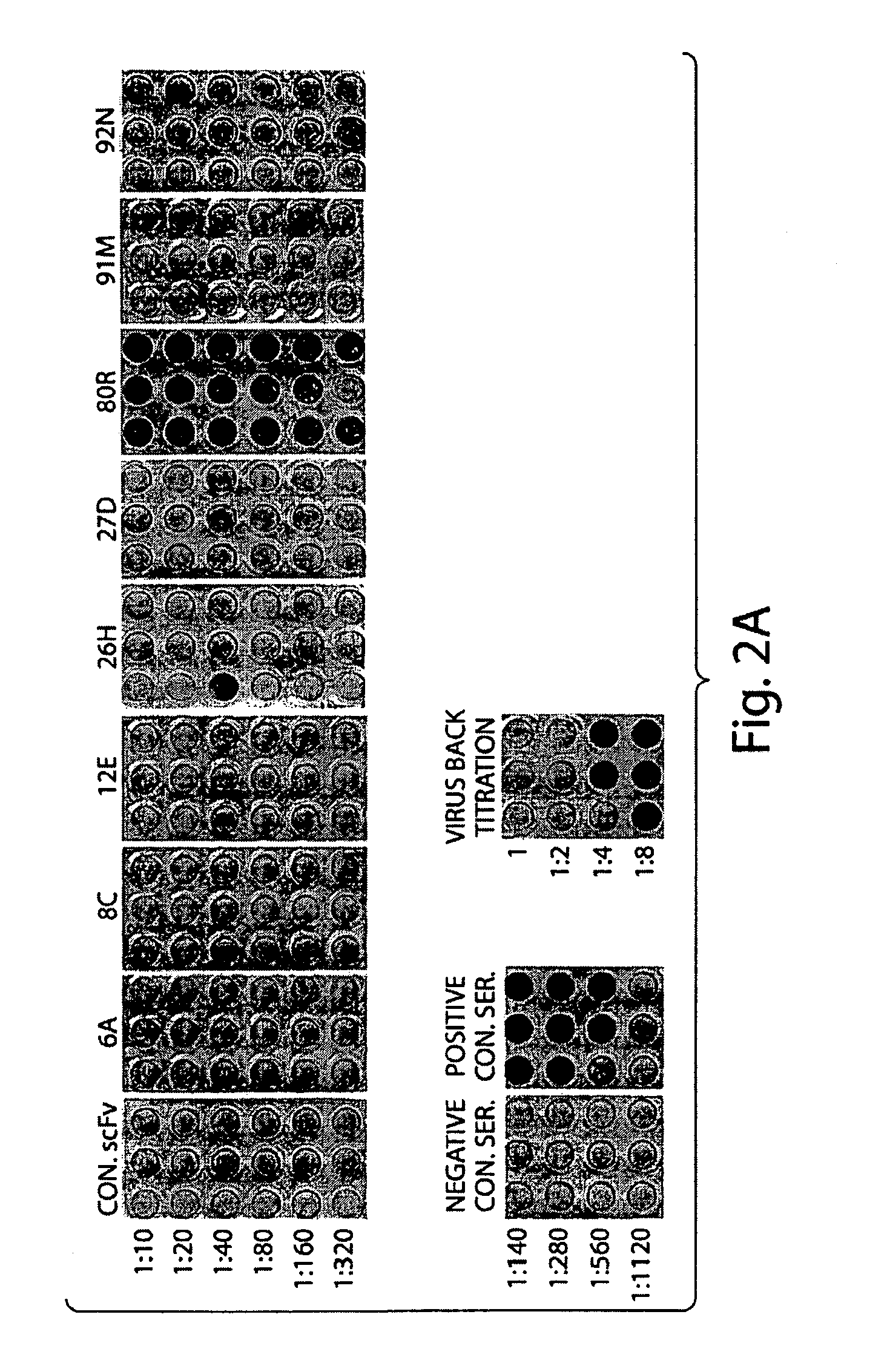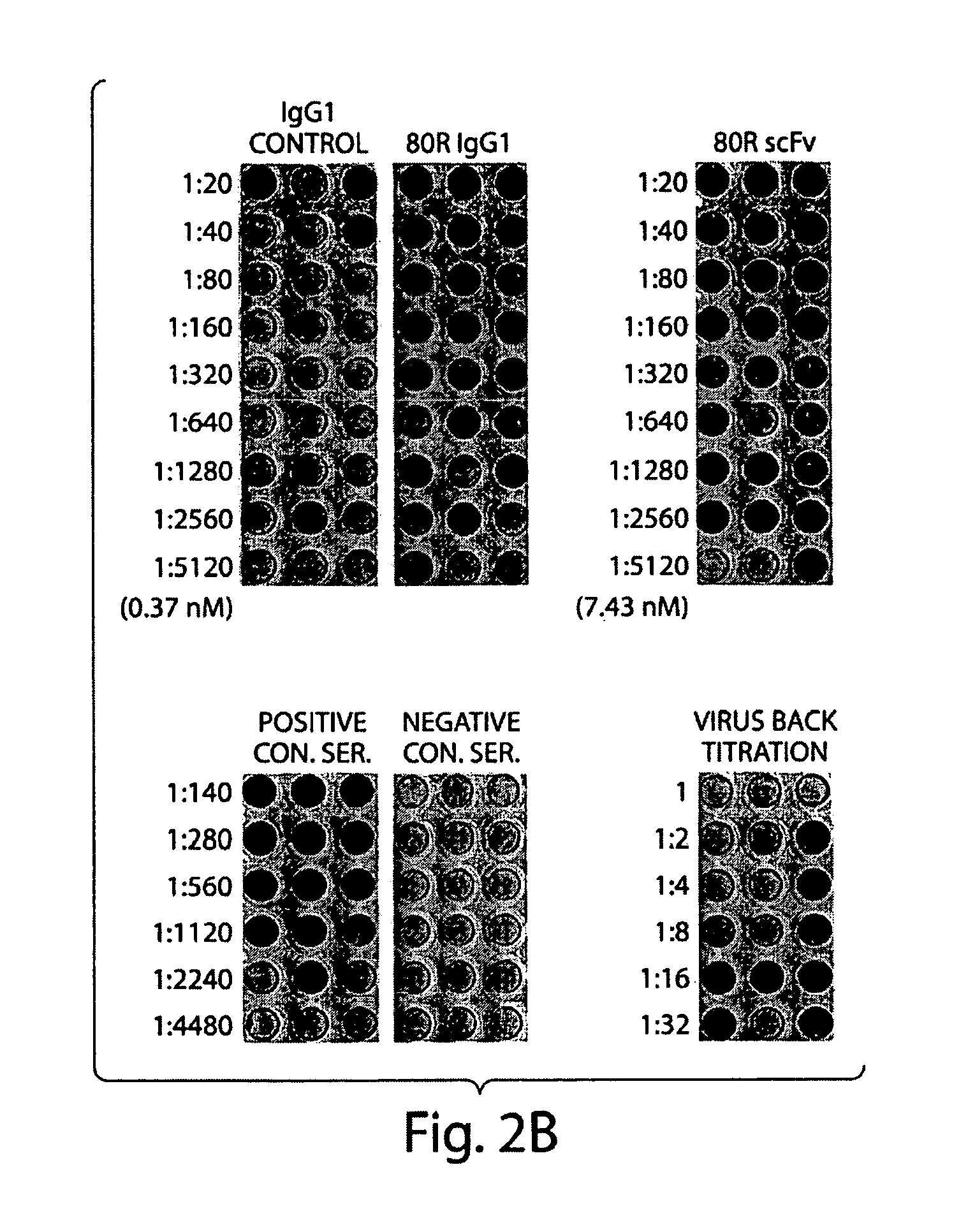Antibodies against SARS-CoV and methods of use thereof
a technology of antibodies and sars-cov, applied in the field of antiviral antibodies, can solve problems such as global pandemics, and achieve the effect of inhibiting syncytia formation
- Summary
- Abstract
- Description
- Claims
- Application Information
AI Technical Summary
Benefits of technology
Problems solved by technology
Method used
Image
Examples
example 1
Expression and Purification of SARS-CoV S1 and Truncated S1
[0203]Plasmids encoding S1 domain of SARS-CoV S protein (residues 12-672), N-terminal of the S1 (residues 12-327) or C-terminal of the S1 (residues 264-672) fused with Fc region of human IgG1 (named S1-Ig, S1 (327)-Ig and S1 (264-672)-Ig, respectively) were transfected into 293T cells for transient expression. Plasmids encoding the S1 domain (residues 12-672) fused C-terminally with C9 (S1-C9) was also transfected into 293T for expression. The Ig-tagged proteins were purified by protein A Sepharose. Anti-C9 antibody 1D4 (obtained from the National Cell Culture Center) was conjugated with protein A Sepharose and was used for purification of S1-C9. The purity was detected by SDS-PAGE and the protein concentration was determined by a protein assay kit (Bio Rad, Hercules, Calif.).
example 2
Selection of Phase Library and Screening of Phage Antibodies
[0204]Two human non-immune scFv libraries (having a total of 2.7×1010 members) constructed from B-cells of 57 un-immunized donors were used for selection of scFvs against the purified S1-C9. 5×1011 pfu of phage-scFvs prepared from each library were mixed and introduced for panning into Maxisorp immunotubes (Nunc, Naperville, Ill.) coated with 10 μg S1-C9. Non-specifically absorbed phages were removed by intensive washings. Specific bound phages were eluted with 100 mM triethylamine, neutralized, amplified and used for further selections as described by Harrison et al., Methods. Enzymol. 267:83-109 (1996).
[0205]Randomly picked single phage-scFv clones were screened for specific binding to S1-C9 by enzyme-linked immunosorbent assay (ELISA) after three rounds of panning. 96-well Maxisorp immunoplates were coated with 0.2 μg S1-C9 per well or control proteins HIV-1 gp120-C9 and BSA, blocked with PBS containing 4% nonfat milk. P...
example 3
Expression and Purification of ScFvs and Whole Human IgG1
[0206]The VH and VL gene fragments of eight S1-specific scFvs (6A, 8C, 12E, 26H, 27D, 80R, 91M, and 92N) were cloned into prokaryotic expressing vectors. Some of them (scFvs 6A, 80R, 91M and 92N) were cloned into pSyn1 vector (see Schier et al., Immunotechnology 1:73-81 (1995); Bai et al, J. Biol. Chem. 278:1433-42 (2003)), expressed in E. Coli. XL1-Blue (Stratagene, La Jolla, Calif.), and purified from the periplasmic fractions. The others (scFvs 8C, 12E, 26H, and 27D) were cloned into pET22b(+) vector (Novagen, Madison, Wis.), expressed in E. coli BL21(DE3) (Novagen) and purified from insoluble fraction of the inclusion bodies.
[0207]All scFvs contain a His-6 tag that allows purification by immobilized metal affinity chromatography (IMAC). The scFvs purified from the periplasmic extracts were dialyzed in PBS, and the scFvs purified from inclusion bodies were renatured by dialyzing in 0.4 M L-Arginine containing buffer followe...
PUM
| Property | Measurement | Unit |
|---|---|---|
| volume | aaaaa | aaaaa |
| concentration | aaaaa | aaaaa |
| 90% inhibitory concentration | aaaaa | aaaaa |
Abstract
Description
Claims
Application Information
 Login to View More
Login to View More - R&D
- Intellectual Property
- Life Sciences
- Materials
- Tech Scout
- Unparalleled Data Quality
- Higher Quality Content
- 60% Fewer Hallucinations
Browse by: Latest US Patents, China's latest patents, Technical Efficacy Thesaurus, Application Domain, Technology Topic, Popular Technical Reports.
© 2025 PatSnap. All rights reserved.Legal|Privacy policy|Modern Slavery Act Transparency Statement|Sitemap|About US| Contact US: help@patsnap.com



